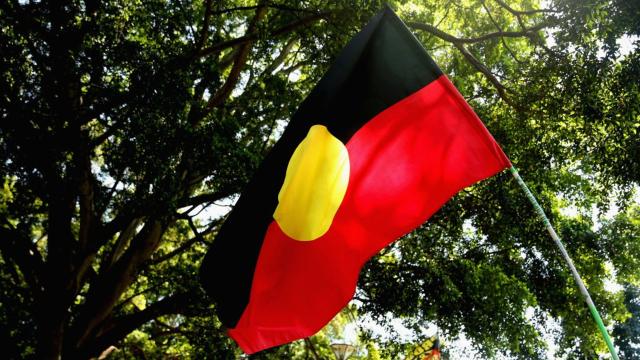Australia is and always will be Aboriginal land and it’s up to all of us to fully acknowledge that.
A moment in the season finale of The Bachelorette, starring Yamatji and Noongar woman Brooke Blurton, brought the discussion of whose land you’re on to the table for Aussies all over the country, which is an incredibly important thing.
In essence, Blurton’s friend and Gomeroi woman Amy Thunig spoke to the two finalists, Darvid Garayeli and Jamie-Lee Dayz, and asked them if they knew whose land they were on. They both couldn’t tell her the answer. The moment was a significant one, and has likely left a lot of Australians questioning their own knowledge in this space.
So, let’s take a look into the process of learning what Aboriginal or Torres Strait Islander land you’re on and paying respect to the Traditional Owners.
Olivia Williams, the founder and creator of Blak Business, shared with us recently that “learning and using the name of the Country beneath your feet is a powerful act of acknowledging, understanding, and revealing the true history of this continent.”
There are a number of excellent resources out there to help you understand which First Nations Country you reside on. Here are a few to help you on your way.
How to learn the names of the Aboriginal and Torres Strait Islander Countries that make up Australia
First, to get an idea of what land you’re on, it’s a good idea to find a Welcome to Country that’s been conducted by elders in the area.
Most of the time, videos of these speeches or transcripts are posted online following the event so it’s a great first step to finding out the traditional names and languages of the area.
Looking up the Aboriginal land council for the town or suburb that you reside in is another way of getting your information.
For a comprehensive map of Indigenous Australia, you can look to the Australian Institute of Aboriginal and Torres Strait Islander Studies (AIATSIS).
AIATSIS’ map, created by David R Horton, provides a visual guide of the many different First Nations Countries that make up Australia.
It’s important to note that the map only shows general locations of larger groupings of people and may include combinations of clans, dialects or individual languages, thus it is not intended to be exact.
You can view the map here or purchase your own print version here.
First Languages Australia has created the first interactive map that displays the diversity of Australia’s Aboriginal and Torres Strait Islander languages.
The map titled ‘Gambay’ means ‘together’ in Butchulla language of the Hervey Bay region in Queensland. The map is designed to reflect the names and groupings favoured by the Aboriginal and Torres Strait Islander communities.
You can learn which language corresponds with the First Nations Country you are on via the map here.
Blak Business also has an excellent in-depth guide to help you understand what Country you are on as well as how you can share it with others online. The website also has a huge range of informative resources on Aboriginal and Torres Strait Islander topics.
Recognising and using the names of the traditional Countries that make up Australia is something that we should all make commonplace.
Some organisations have been celebrated for taking steps towards making this happen. Australia Post now recognises First Nations place names on addresses and Channel Ten have used traditional names during its weather reports recently.
It’s small steps like this that help us towards the bigger picture, and everyone needs to do their part.
Now that you know the name of the First Nations land that you’re on, go ahead and use it.
This article has been updated since its original publish date.

Leave a Reply
You must be logged in to post a comment.